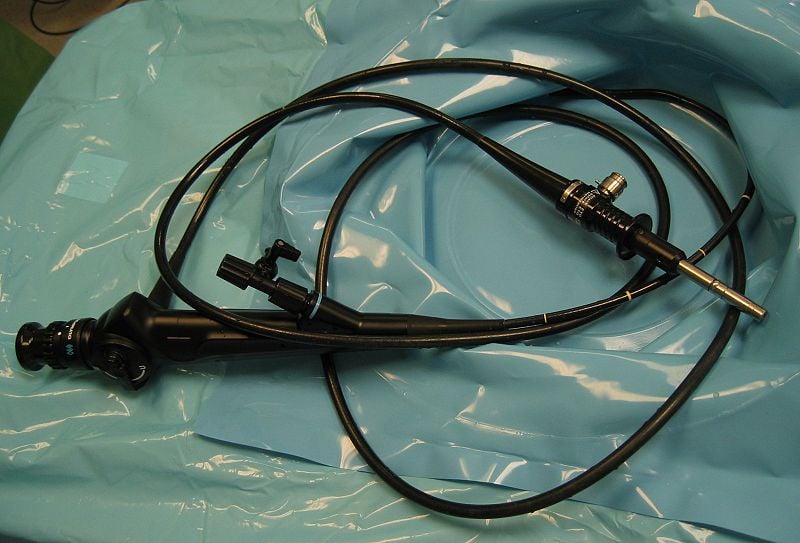Cystoscopy
What is cystoscopy?
Cystoscopy is a procedure that uses a camera to look in the bladder. This allows the urologist to examine the urinary pathway ("urethra") and the bladder. Cystoscopy may be recommended for number of conditions in the urinary tract. Conditions include blood in the urine, inability to urinate, abnormal urinary stream, stones in the urinary tract, urinary tract infection, loss of urine or pain in the urinary pathway. Cystoscopy may also be recommended for evaluation of the anatomy, history of surgery of the urinary tract or history of bladder cancer.
By Cancer Research UK - Original email from CRUK, CC BY-SA 4.0, https://commons.wikimedia.org/w/index.php?curid=34333013
Types of cystoscopes
There are 2 types of cystoscopes. One is a flexible fiberoptic cystoscope. This type of cystoscope may be used in the office. The other is a rigid cystoscope. Rigid cystoscopes are often used in the operating room as it allows the passage of tools. Tools may be used to biopsy abnormal areas, pass a laser to treat bladder stones, treat enlarged prostate in men or seal bleeding blood vessels.

By Michael Reeve - Self-photographed, CC BY-SA 3.0, https://commons.wikimedia.org/w/index.php?curid=120331
Where is cystoscopy performed?
Cystoscopy can be performed in the office, surgery center or hospital. Location of cystoscopy may depend on whether or not intervention is needed, patient history and anatomy of the urinary tract and patient preference.
How does office cystoscopy work?
The nurse will ask you to empty her bladder before the procedure. You will then be taken to an exam room and asked to undress from the waist down. Women will be asked to place the legs in stirrups. Men will be asked to lay flat. The nurse cleans the opening to the urinary tract ("urethral meatus") with a betadine swab. The nurse then squirts lidocaine jelly into the urinary pathway ("urethra") for lubrication. The urologist then places a small flexible camera in through the urinary pathway into the bladder. The bladder is filled with water to allow the urologist to see the entire bladder surface. The procedure takes a few minutes.
Sometimes interventions are performed such as removing a plastic tube, stent from the kidney tube ("ureter") or removing a stone or foreign body from the bladder. You may be given an antibiotic pill depending on your history and whether or not a procedure was performed.
![Images from a cystoscopy. The top two images show the interior of a bladder. The top left image shows the bladder wall, the top right shows the cystoscope passing into the bladder from the urethra. The bottom two images show an inflammed urethra. Cystoscopy carried out on Michael Reeve, 29, at the North London Nuffield Hospital].](https://www.urologygroupvirginia.com/content/urologic-care/3-comprehensive-urologic-care/1-cystoscopy/800px-cystoscopy-im-20050425.jpg)
By Michael Reeve - Own work, CC BY-SA 3.0, https://commons.wikimedia.org/w/index.php?curid=120626
Does cystoscopy hurt?
It is uncomfortable while the cystoscope is placed. The discomfort decreases once the camera is in the bladder. As the urologist fills her bladder with water, you will develop the sensation of a full bladder. You will need to empty her bladder after the procedure. Be sure to empty the bladder right after the procedure as retaining urine can be a risk for infection.
You may take an over-the-counter acetaminophen (Tylenol) or NSAID (ibuprofen) an hour prior to the procedure if you'd like. Most people tolerate cystoscopy without taking medication.
Risks of cystoscopy
Cystoscopy is typically tolerated without problems. There is a small risk of urinary tract infection, pain with urination, bleeding or inability to urinate.
Summary
Cystoscopy allows evaluation of the urinary tract for a variety of urinary problems. It is typically well tolerated in the office and has a low risk of complications.
Print PageContact us to request an appointment or ask a question. We're here for you.




